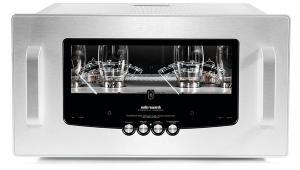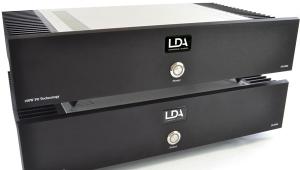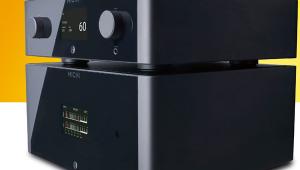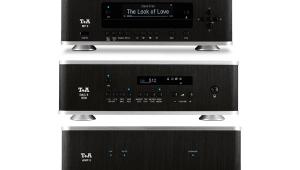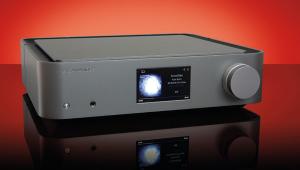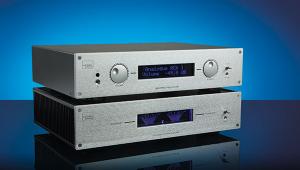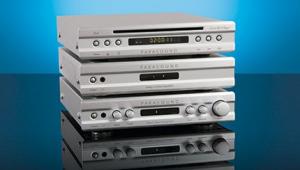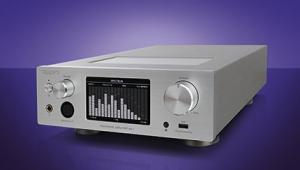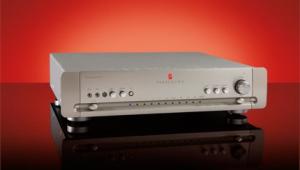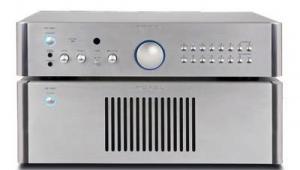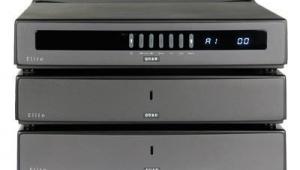Constellation Centaur II 500 Stereo

 Okay, before we go any further let’s deal with the rather sizable elephant jumping up and down vying for our attention in the room. In the highly unlikely event that you’re ever going to come into a serious amount of money – say £65,000 – chances are treating yourself to a new stereo power amplifier most probably won’t be the first thing you’d consider spending it all on. But let’s put mundane responsibilities like mortgages, that horrific credit card balance, the kids’ financial future and replacing the family jalopy to one side for a moment and pretend that just for once you can put yourself first. After all, this is what our Exotica tests are all about – putting yourself into the shoes of a Russian oligarch, Premiership football player or jetset playboy for whom throwing a ton of money at one of life’s luxuries is a permanent state of being. If you were able to count yourself among such rarified company, chances are Constellation Audio would be an organisation whose products you’d be able to routinely enjoy, rather than jealously drool over from a distance.
Okay, before we go any further let’s deal with the rather sizable elephant jumping up and down vying for our attention in the room. In the highly unlikely event that you’re ever going to come into a serious amount of money – say £65,000 – chances are treating yourself to a new stereo power amplifier most probably won’t be the first thing you’d consider spending it all on. But let’s put mundane responsibilities like mortgages, that horrific credit card balance, the kids’ financial future and replacing the family jalopy to one side for a moment and pretend that just for once you can put yourself first. After all, this is what our Exotica tests are all about – putting yourself into the shoes of a Russian oligarch, Premiership football player or jetset playboy for whom throwing a ton of money at one of life’s luxuries is a permanent state of being. If you were able to count yourself among such rarified company, chances are Constellation Audio would be an organisation whose products you’d be able to routinely enjoy, rather than jealously drool over from a distance.
Individually built by hand in California, Constellation counts faithfulness to the original source as one of the key tenets of its high-end products, explaining that many of its proprietary design concepts came about as a result of the company ethos of keeping signal paths as simple, transparent and perfect as possible. Consequently, the Centaur II 500 – like all of the company’s power amps – employs a 125W/8ohm power module with N-type MOSFETs (rather than complementary NPN and PNP pairs) in a single-ended configuration. There are four pairs of these in a balanced/bridged configuration – a move that takes its cues from the 250W Centaur II Stereo (a snip at just £48,000), albeit with a much-improved transformer and power supply unit. However, these modules are not connected to the 4mm output terminals in the traditional way by wires, as Constellation instead utilises a sequence of plated copper bus bars bolted together and to the rear of the aforementioned outputs.
Externally, minimalism continues to be the order of the day, with the US manufacturer noting that it spends countless hours creating industrial designs that while pleasing to the eye are never intended to be a distraction. Aesthetically at least, it’s hard to tell the difference between the Centaur II 500 Stereo and a power amp costing considerably less. Of course, it’s a given that in its minimalist way, its rather beautiful to look at with its dimpled finish proving both stunning and highly resilient. Weighing about the same as Oprah Winfrey give or take a bag of sugar or two, it’s certainly no lightweight and will require an international weightlifter (or two regular people) to shift into position – and you’ll probably want to leave it there when you’re done.
The front panel features simply a status light and a bar that can be used for switching in and out of standby mode (the main power switch is located around the back). When the power is on the LED glows red, but a long push on the lefthand edge of the bar initiates a soft-start/self-diagnosis programme during which the light starts to flash green. The amp unmutes and the LED switches to blue once the procedure has concluded and the amp is stable and fully powered up.
Around the back is a small toggle switch for muting the sound and one for selecting the inputs. The fact that they are both so similar makes it annoyingly easy to mistake one for the other and be thrown into a fit of mild panic when selecting an input that you’ve somehow broken the amp when it’s more likely you’ve simply just muted it by mistake.
On the subject of connections, your choices extend to single-ended RCAs, balanced XLRs and a set of XLRs that can be switched from Balanced to Direct – again using a small toggle switch. Selecting the latter mode bypasses the Centaur II 500 Stereo’s first gain stage (voltage preamp) – it uses low-noise FETs and is fully differential/balanced – to remove it from the signal chain in order to create what’s described as ‘Constellation Link’. Naturally, this input boasts a lower overall gain than the standard balanced one, but this is compensated for by the higher overall gain of the preamp. A USB port for firmware updates, 12V trigger and RS232 control sockets complete the picture.
For those that are familiar with Constellation’s range, the Centaur II 500 Stereo is effectively a 250W Centaur II 500 Stereo boasted by the addition of a power supply that’s derived from the company’s flagship Hercules II amplifier. However, it’s not quite that simple as the maximum voltage of each of the power supply capacitors has been upped by 30 percent in order to cope with the new higher rail voltages. The output stages and their respective heatsinking, meanwhile, remain the same as they are considered up to the job of handling the increased output.
Sound quality
Seeing as this isn’t your typical Exotica review, we felt it only right that the power amp be given enough time to properly show what it can do. Consequently, testing is carried out over several months with a series of different speakers drafted in, ranging from Golden Ear’s Triton One R and Paradigm’s Persona 9H to Focal’s Kanta No3 and Bowers and Wilkins’ 800 D3. Needless to say, when driven by a dCS Vivaldi One digital media player and put through its paces as both a preamp and a DAC, the results are jaw-droppingly good – highlighting what that rather disparate selection of loudspeakers is capable of when properly driven.
More than anything else, the Centaur II 500 Stereo delivers all the clarity, power and dynamics that even the showiest of playboys could ever desire. In short, the grunt that it brings to the listening room is positively seismic. There’s the very definite impression that it always has plenty of power in reserve, no matter how hard it’s pushed. But aside from just being an iron fist in a velvet glove, even the most powerful amp ends up sounding artificial if it can’t match all that heft with the requisite agility, delicacy and finesse needed to subtly illuminate your music collection rather than just blasting through it like a bull in a DeBeers diamond emporium. And it’s here that things become impressive.
Benjamin Britten’s Young Person’s Guide To The Orchestra is a fitting test seeing as it shows off the tone, colour and capacities of the various sections of the orchestra. The Centaur II 500 Stereo not only highlights every element of the instruments, but also throws up a few emotional surprises along the way. Everything from the thunder of the percussion and the crisp rattle of the snares is superb, while the way the final fugue grows to an almighty crescendo is hairs on the back of the neck stuff.
Things are just as spine tingling with Paul Lewis’ piano rendition of Mussorgsky’s Pictures At An Exhibition. Whether it’s the faster paced or the sloth-like slower ‘pictures’, every note hangs in the air placing you firmly in the acoustic of Berlin’s Teldex studio. The sound is lush and rich while maintaining that all-important tight definition.
Putting it through its paces with the rambunctious histrionics of Queen’s Keep Yourself Alive or the refined soft rock of Listen To What the Man Said by Paul McCartney, the agility of this hefty bruiser is clear to hear. It’s like some mad scientist decided it would be a good idea to fuse the power of Mike Tyson with the agility of Jackie Chan and the finesse of Nureyev. Whatever you throw at it – from chamber music to drum and bass, jazz to heavy rock – the same deft mixture of delicacy and power come to the fore every time.
Conclusion
Without wishing to revert to being as crass as bringing up the thorny issue of cost, at a price that few people can ever get close to spending you’d hope that the Centaur II 500 Stereo would be deeply impressive – in fact you’d probably demand it. But it’s the level of performance it conjures up that really takes the breath away. Very few of us get to experience weekending in a luxury penthouse, flying a private jet to our own desert island or taking a Lamborghini Veneno for a spin at the weekend, but as a sonic equivalent to these high-end thrills little else comes even close. HFC
DETAILS
Product: Constellation Centaur II 500 Stereo
Type: Stereo power amplifier
FEATURES
● Quoted power output: 500W (8ohm)
● Inputs: 1x RCA; 2x XLR (1 for Constellation Link); USB port (for firmware updates)
 |
Inside this month's issue:
Ruark R610 music system and Sabre-R standmount speakers, PMC twenty.23i Active, floorstanders, English Acoustics Downton preamplifier, Bluesound NODE ICON preamp/streamer, Ortofon Concorde Music Blue MM cartridge and much, much more
|

